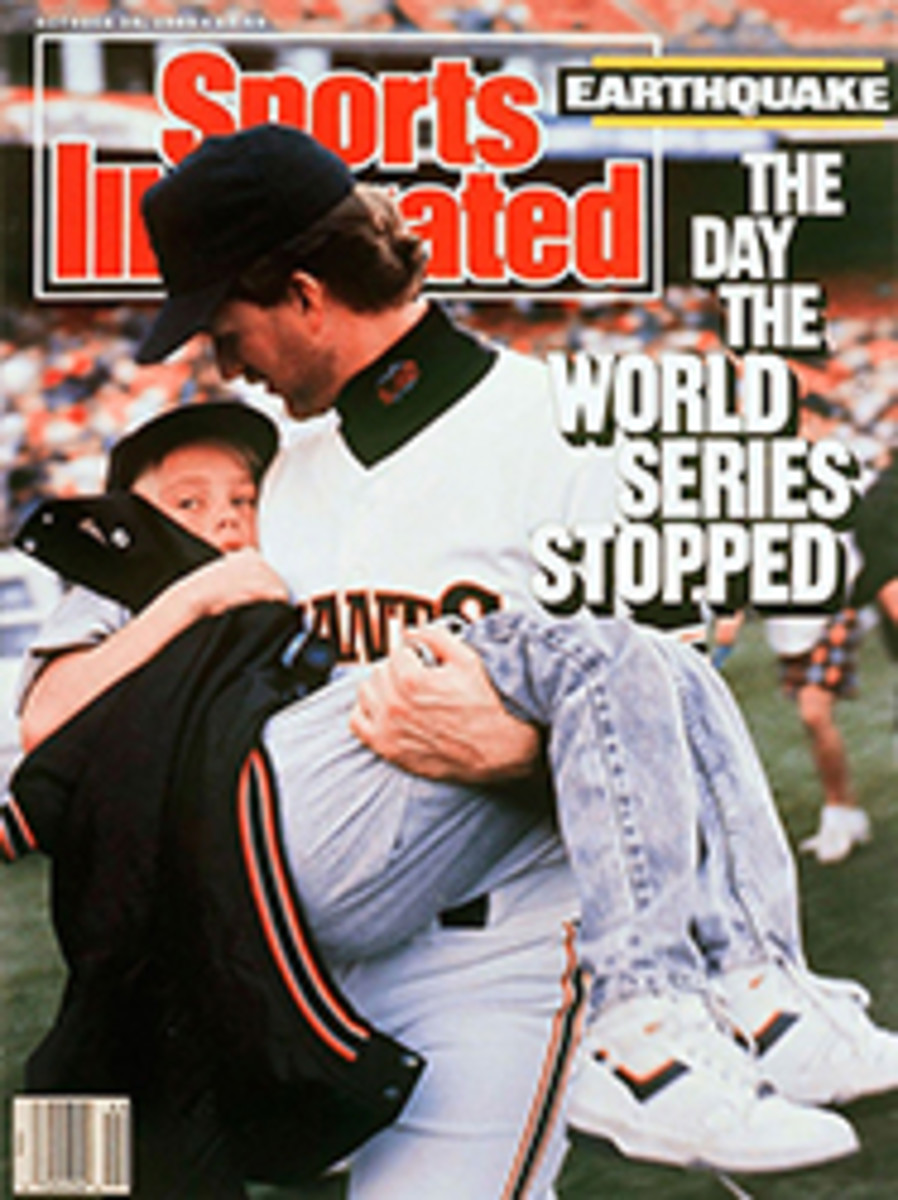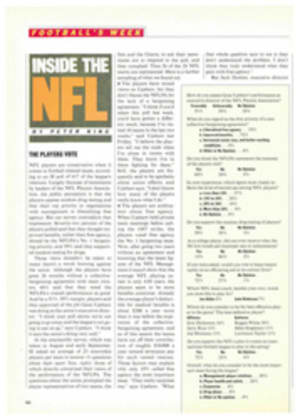
"WE'RE HAVING AN..."
No broadcaster handled the coverage of the San Francisco earthquake better than ABC sports anchor Al Michaels, who was in the press box at Candlestick Park doing the network's World Series pregame show when the ground began to shake. Michaels was on call for the next 12 hours, reporting on the devastation and death that followed those 15 seconds of terror, doling out information to an anxious nation.
"We're having an earth—" Michaels yelled as the quake began at 5:04 p.m. on Oct. 17. Power lines—including those at Candlestick—were severed, ending the transmission in midsentence, but technicians at ABC switched to emergency generators, and both ABC and ESPN were on the air from the stadium within minutes.
"The camera in the booth got power first, and we flipped it around until we saw a shot [in its monitor] from the blimp of the Bay Bridge," Michaels recalls. "That's when I first had an understanding that even though all of us at Candlestick were O.K., the rest of the area was not." Michaels, who lived for 12 years in the Bay Area, was able to identify the locations covered by the camera aboard the Goodyear blimp and carefully guide viewers through a maze of rumors and reports of injuries.
Many viewers were surprised by his gritty performance. After all, he's best known as the voice for ABC's Monday Night Football, for his curt treatment of print journalists who criticize him, and for his call—"Do you believe in miracles? Yes!"—when the U.S. hockey team upset the Soviets in the 1980 Olympics. Michaels's work should not have been a surprise, because above all he is a journalist. "Sports reporters are the same as news reporters," he says. "We present the story, assess situations and articulate emotions. The same basic principles apply."
And most sportscasters—unlike a lot of their counterparts in news—are at their best on live TV. They are comfortable with instantly coordinating words and pictures, and they can quickly process the information funneled to them, through earphones, by producers and directors.
In fact, many members of the ABC team at Candlestick displayed a can-do attitude. The network kept in touch with the blimp thanks to Tony Reda, a technician who sat atop the press box holding the antenna in place. Other technicians kept the generators running throughout the long ordeal by siphoning fuel from the network's diesel trucks. An audio technician held wires together to ensure that Michaels never lost contact with the network.
ESPN provided live reports for most of the four hours after the quake hit. Anchor Bob Ley, stoic in his delivery, was kept informed by correspondent Chris Myers, who was listening to local radio stations, and by broadcaster Chris Berman. "If I sounded scared," Ley said, "I was."
ABC was quick to bring in news anchor Ted Koppel, who had been watching the Series from the network's studios in Washington, D.C. Koppel could have dominated the airwaves, but to his credit, he often deferred to Michaels, asking for his input. Koppel also slapped his colleague on the wrist when Michaels, upon learning that the quake's epicenter was near Santa Cruz, which is 75 miles south of San Francisco, said, "Thank God the epicenter was far enough away from [the 60,000 people in] Candlestick Park so this structure remained erect."
"Well, of course, that doesn't do a lot for the folks in Santa Cruz," Koppel replied.
Michaels wasn't perfect, but when called upon to provide his audience with critical details, he sparkled. "Kids always ask me how to get to this point in broadcasting," he says. "I tell them to pay attention to everything that happens in the world. Sports often is more than the hit-and-run, stolen bases and three days' rest."
When Michaels finished his marathon at 5 a.m. on Wednesday, he returned to his hotel and climbed the 13 flights of stairs to his darkened room. Then he sat down and wept. "I could finally deal with my own emotions," he said.
PHOTO
ABC-TV
In the hectic moments after the quake, Michaels was a calm presence.

